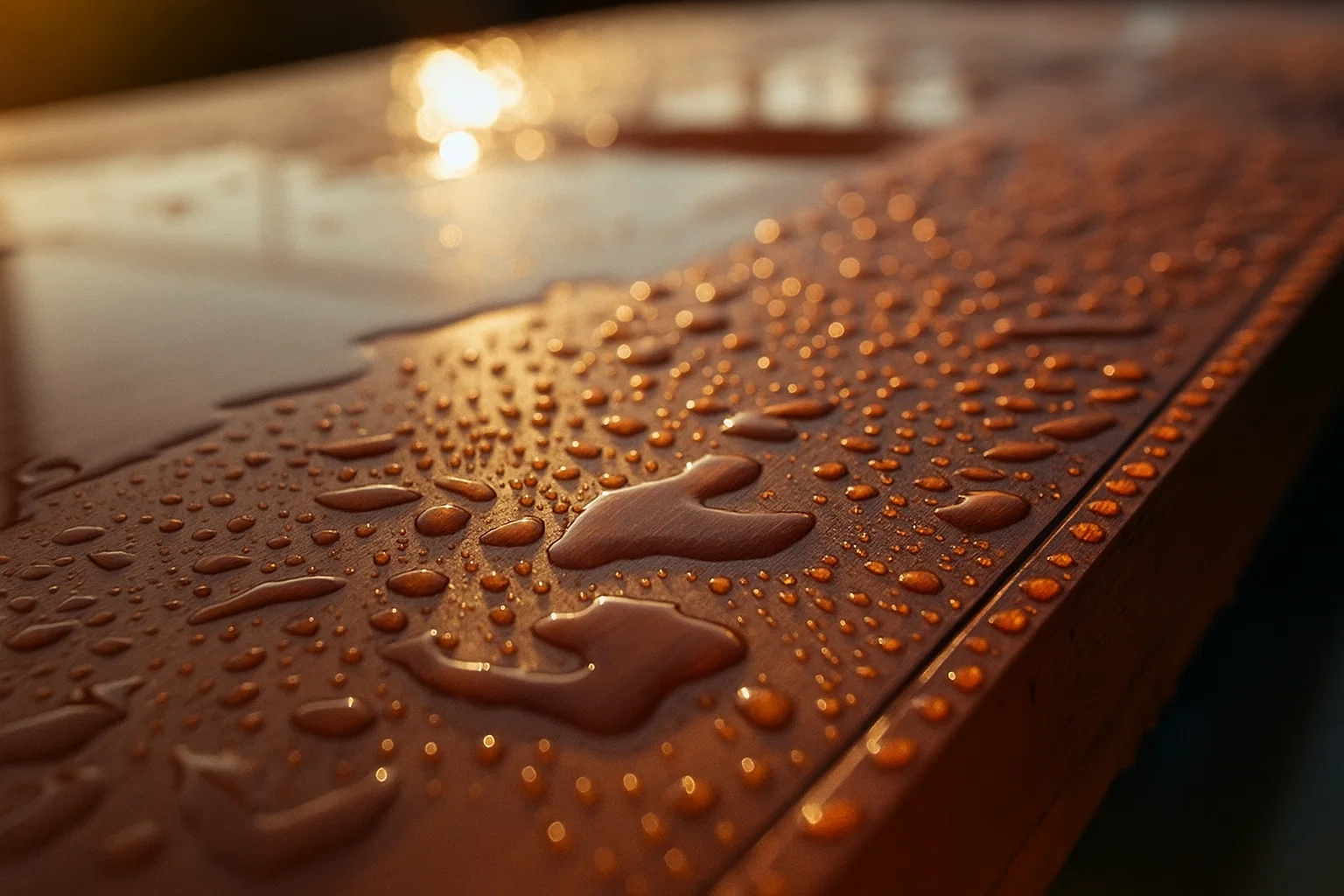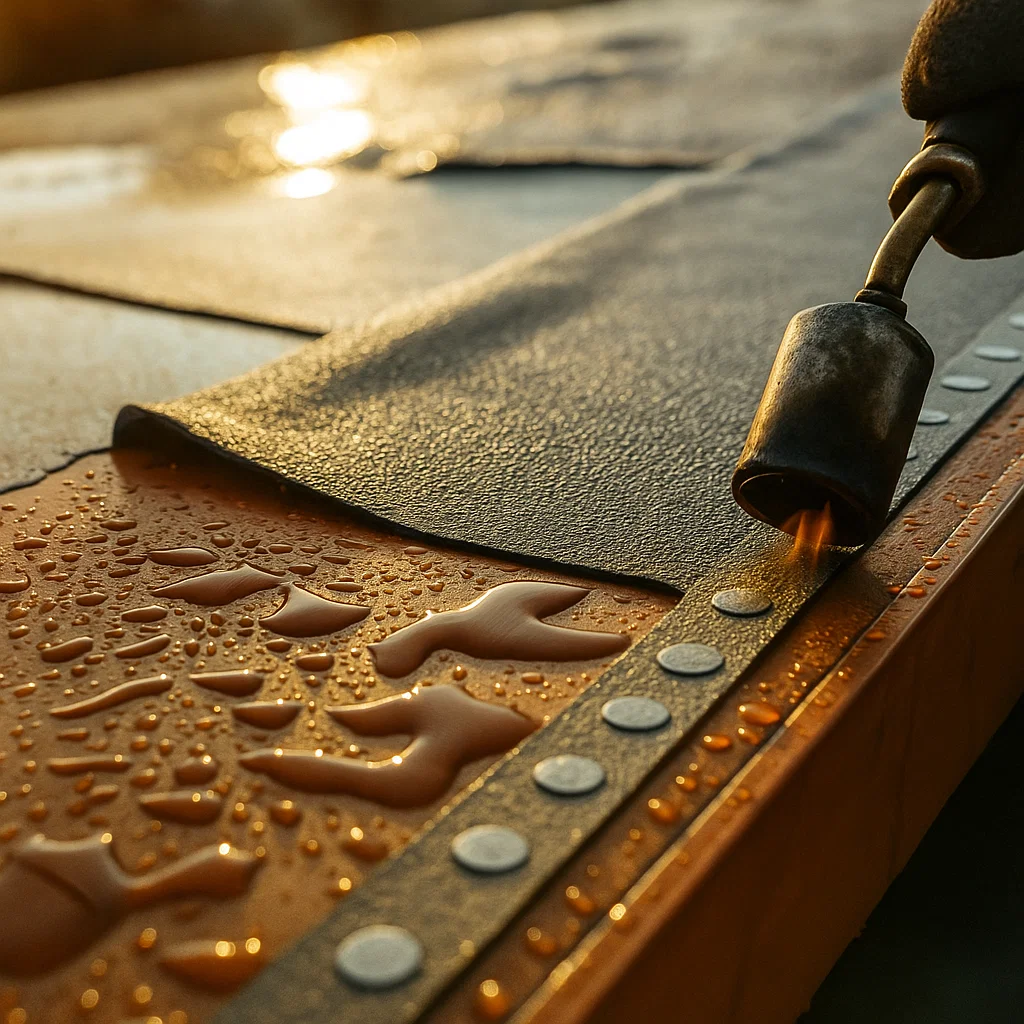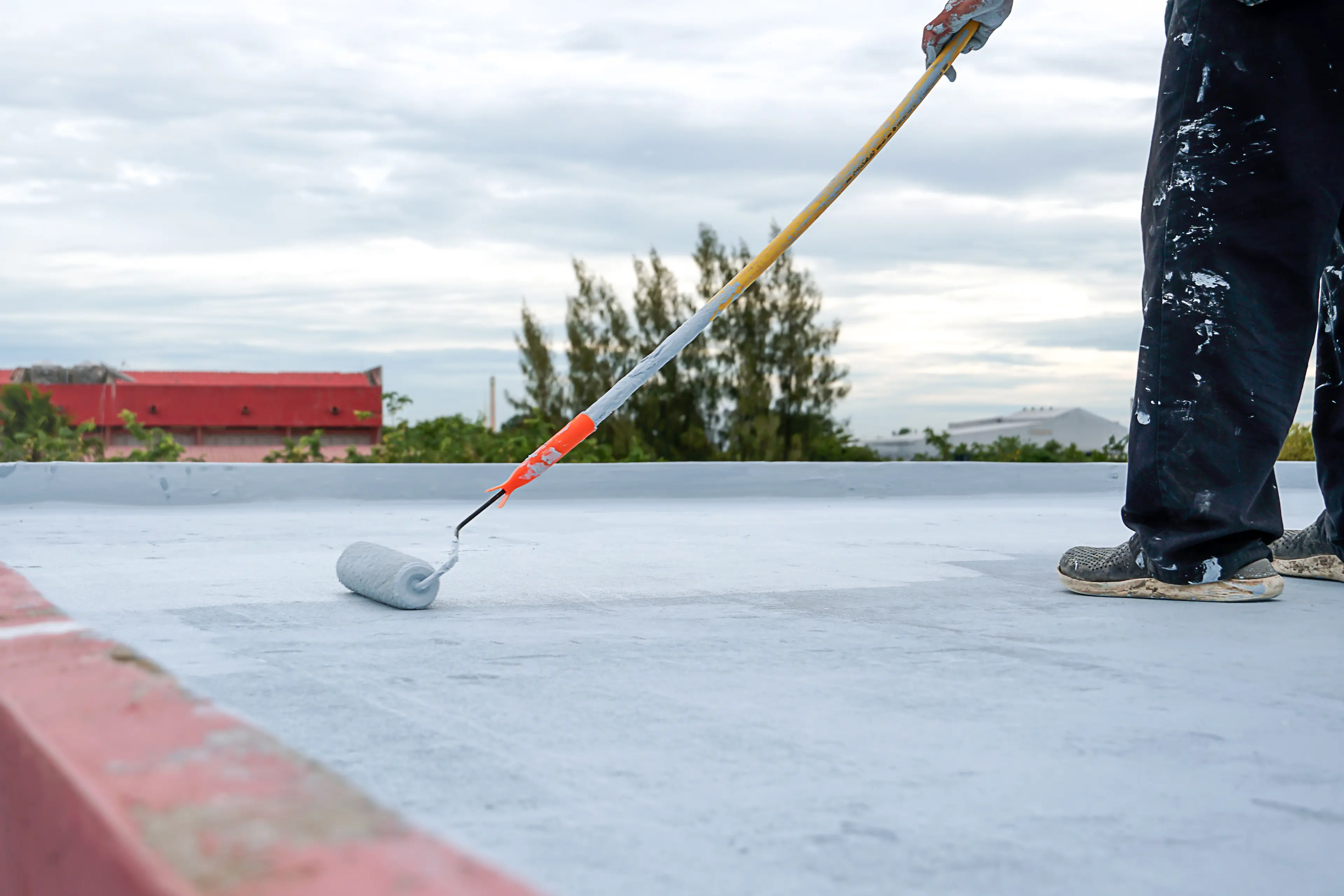The Ultimate Guide to Deck Waterproofing: Methods, Materials, and Why It's Crucial

Table of Contents
Introduction: Why Deck Waterproofing is Non-Negotiable
For homeowners with outdoor living spaces, deck waterproofing represents one of the most critical investments you can make to protect your property. Whether you have a rooftop terrace, balcony, or ground-level deck, water intrusion can cause catastrophic damage that compromises structural integrity and leads to costly repairs.
The consequences of inadequate waterproofing extend far beyond simple leaks. Unchecked moisture can rot wood framing, corrode metal components, damage interior finishes, and create ideal conditions for mold and mildew growth. What begins as a small leak can quickly escalate into a major structural issue requiring extensive repairs.
Industry Insight: According to the National Association of Home Builders, water intrusion is the leading cause of building envelope failures, accounting for over 70% of all construction litigation. Proper deck waterproofing can prevent these issues and extend the life of your outdoor living space by decades.
In this comprehensive guide, we'll explore all aspects of deck waterproofing—from the various methods and materials available to cost considerations and long-term benefits. Whether you're building a new deck or renovating an existing one, this information will help you make informed decisions to protect your investment.
Deck Waterproofing Methods: Choosing the Right Approach
Selecting the appropriate waterproofing method depends on several factors, including your deck's location, intended use, substrate material, and budget. Each approach has distinct advantages and limitations that make it suitable for specific applications.
Method #1: Membrane Systems
Sheet membrane systems are among the most reliable and durable waterproofing solutions available. These systems consist of rolls of waterproof material that are applied to the deck surface, creating a continuous barrier against water intrusion.
Rubberized Asphalt Membranes: Self-adhering sheets that create a seamless barrier. Excellent for complex shapes and details.
PVC and TPO Membranes: Thermoplastic materials that are heat-welded at seams for complete water protection. Highly durable and root-resistant.
EPDM (Rubber) Membranes: Synthetic rubber sheets known for exceptional elasticity and weather resistance. Ideal for areas with extreme temperature fluctuations.

Best Applications for Membrane Systems
Membrane systems excel in these scenarios:
Rooftop Decks
Where failure would cause interior damage
High-Traffic Areas
Commercial properties and multi-family buildings
Complex Layouts
Decks with penetrations and irregular shapes
Planters & Green Roofs
Where root resistance is critical
Method #2: Liquid-Applied Coatings
Liquid waterproofing systems are applied as a fluid that cures to form a seamless, monolithic membrane. These systems offer excellent versatility and can conform to complex shapes without seams or joints.

Polyurethane Coatings: Flexible, durable, and UV-resistant. Excellent for exposed decks that receive direct sunlight.
Acrylic Coatings: Water-based options that are easy to apply and maintain. Often used as a protective top coat over other membranes.
Rubberized Liquid Membranes: Often reinforced with fabric at seams and transitions. Provides excellent elongation and crack-bridging capabilities.
Method #3: Protected Membrane/Tile Systems
This approach combines waterproofing membranes with protective layers and finished surfaces. The waterproofing layer is installed beneath the walking surface, protecting it from UV damage and wear.
Pedestal Tile Systems
Ideal for rooftop decks where drainage and accessibility are important. Tiles are elevated above the waterproofing membrane.
Mortar Bed Systems
A traditional approach where tiles are set in a mortar bed over the waterproofing membrane. Provides excellent durability.
Drainage Mat Systems
Specialized mats provide drainage and protection for the waterproofing membrane before the finish surface is installed.
Waterproofing Materials: Pros, Cons, and Costs
Understanding the characteristics of different waterproofing materials will help you select the best option for your specific needs and budget.
| Material | Pros | Cons | Cost/SF (Installed) | Best For |
|---|---|---|---|---|
| Rubberized Asphalt | Self-adhesive, excellent adhesion, flexible | Can be heavy, requires protection from UV | $8 - $12 | Residential decks, balconies |
| PVC Membrane | Durable, root-resistant, heat-weldable seams | Can be punctured, requires professional installation | $10 - $16 | Rooftop decks, green roofs |
| EPDM Rubber | Highly elastic, weather-resistant, long-lasting | Seams require adhesive, can be damaged by oils | $9 - $14 | All climates, extreme temperature areas |
| Polyurethane Liquid | Seamless, UV resistant, flexible | Surface preparation critical, skilled application needed | $7 - $11 | Complex shapes, exposed applications |
| Acrylic Coatings | Easy application, breathable, low VOC | Less durable, may require more frequent recoating | $4 - $8 | Low-traffic areas, budget projects |
Professional Tip: The cost of materials is only part of the equation. Proper installation is critical to performance. Always hire experiencedwaterproofing contractorswho specialize in deck applications and offer warranties on both materials and labor.
How Long Does Deck Waterproofing Last?
The lifespan of your deck waterproofing system depends on multiple factors, including the materials used, quality of installation, environmental conditions, and maintenance practices.
Expected Lifespan by Material Type
| Material | Average Lifespan | With Proper Maintenance | Key Factors Affecting Longevity |
|---|---|---|---|
| Rubberized Asphalt | 10-15 years | 15-20 years | UV exposure, foot traffic |
| PVC Membrane | 20-25 years | 25-30+ years | Puncture protection, seam integrity |
| EPDM Rubber | 20-30 years | 30+ years | Seam maintenance, chemical exposure |
| Polyurethane Liquid | 10-15 years | 15-20 years | Coating thickness, UV protection |
| Acrylic Coatings | 5-10 years | 10-12 years | Recoating frequency, traffic wear |
Extending Your Waterproofing Lifespan
Proper maintenance can significantly extend the life of your waterproofing system:
Regular Inspections: Check for cracks, blisters, or damage at least twice yearly and after severe weather events.
Keep Drains Clear: Ensure drainage systems are free of debris to prevent water pooling.
Address Repairs Promptly: Small issues can quickly become major problems if left unattended.
Professional Maintenance: Schedule professional inspections every 2-3 years to identify potential issues early.
The Benefits: More Than Just Leak Prevention
While preventing water intrusion is the primary purpose of deck waterproofing, the benefits extend far beyond simple leak protection. A properly waterproofed deck delivers multiple advantages that enhance your property's value, safety, and usability.
Structural Protection
- •
Prevents wood rot and structural deterioration
- •
Protects against metal corrosion and concrete spalling
- •
Eliminates freeze-thaw damage in colder climates
- •
Maintains structural integrity for decades
Health & Safety Benefits
- •
Prevents mold and mildew growth
- •
Reduces slip hazards from water accumulation
- •
Creates a healthier indoor environment
- •
Prevents insect infestations attracted to moisture
Financial Advantages
- •
Protects interior finishes from water damage
- •
Extends the life of deck surfaces and structures
- •
Increases property value and marketability
- •
Reduces long-term maintenance and repair costs
Enhanced Usability
- •
Allows for more design options and finishes
- •
Creates dry, usable space below decks
- •
Enables rooftop gardens and green spaces
- •
Provides peace of mind during heavy rainfall
Case Study: Rooftop Deck Transformation
A 15-year-old rooftop deck in a urban apartment building was experiencing chronic leaks that damaged multiple units below. The homeowners association invested $45,000 in a complete waterproofing overhaul with a PVC membrane system.
$120K
Previous Repair Costs
0
Leaks Post-Installation
25+ years
Expected Lifespan
15%
Property Value Increase
Cost Analysis: Investment vs. Expense
Understanding the costs associated with deck waterproofing helps you budget appropriately and recognize the value of this important investment. Prices vary based on method, materials, deck size, complexity, and geographic location.
Average Waterproofing Costs by Deck Type
| Deck Type | Low End | High End | Average Total Cost |
|---|---|---|---|
| Small Balcony (50-100 sq ft) | $500 - $800 | $1,000 - $1,600 | $750 - $1,200 |
| Residential Deck (200-400 sq ft) | $1,600 - $3,200 | $4,000 - $6,400 | $2,800 - $4,800 |
| Large Terrace (500-800 sq ft) | $4,000 - $6,400 | $10,000 - $16,000 | $7,000 - $11,200 |
| Rooftop Deck (1000+ sq ft) | $8,000 - $12,000 | $20,000 - $30,000+ | $14,000 - $21,000 |
Factors Influencing Waterproofing Costs
Several variables can significantly impact the final cost of your waterproofing project:
Project-Specific Factors
- •
Deck Condition: Repair needs can add 20-50% to project costs
- •
Complexity: Multiple penetrations, angles, and details increase labor
- •
Accessibility: Rooftop and high-level decks may require special equipment
- •
Finish Materials: Tile, pavers, or wood decking add to total cost
Regional & Timing Factors
- •
Geographic Location: Labor and material costs vary by region
- •
Seasonality: Spring and summer may command premium pricing
- •
Permit Requirements: Local regulations may require permits and inspections
- •
Warranty Options: Extended warranties may increase initial cost but provide long-term value
ROI Calculation: Waterproofing vs. Repair Costs
Investing in quality waterproofing upfront protects against exponentially higher repair costs down the road.
Conclusion: Protecting Your Investment for Years to Come
Deck waterproofing is not merely an optional upgrade—it's an essential protection for your property investment. The relatively modest cost of proper waterproofing pales in comparison to the extensive damage that water intrusion can cause to structural elements, interior finishes, and even your health through mold growth.
By selecting the appropriate waterproofing method for your specific deck configuration, climate, and usage patterns, you can extend the life of your outdoor living space by decades. Whether you choose membrane systems, liquid-applied coatings, or protected membrane assemblies, the key to success lies in proper installation by experienced professionals.
Ready to Protect Your Deck Investment?
Our waterproofing experts are ready to assess your deck and recommend the best solution for your needs and budget.
Remember that deck waterproofing is a long-term investment in your property's value, safety, and usability. By addressing waterproofing proactively rather than reactively, you can avoid the stress, inconvenience, and expense of water damage repairs while enjoying your outdoor space with complete peace of mind for years to come.
